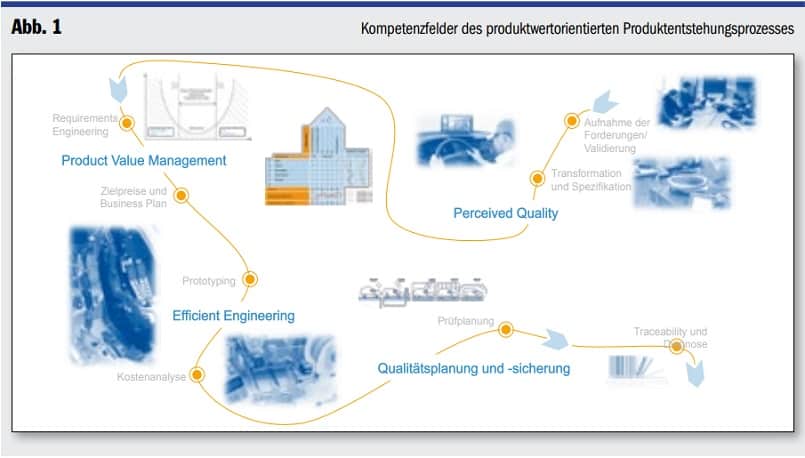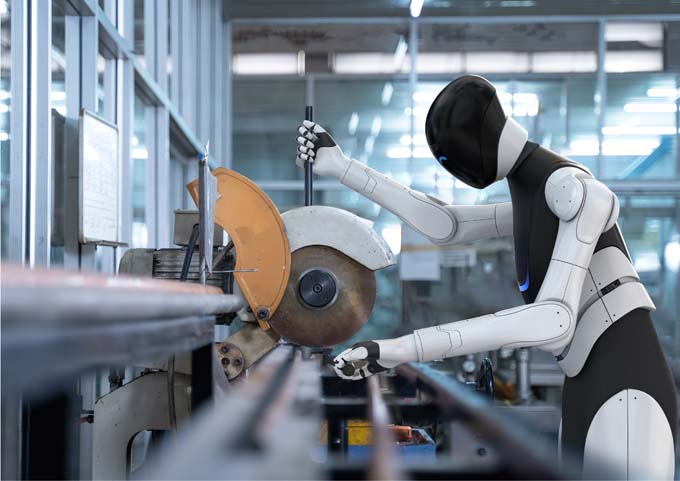Value-based Design for Six Sigma
The success of products depends to a large extent on the extent to which they are positively differentiated from the market from the customer's point of view. Value-oriented product development based on the Design for Six Sigma system enables manufacturers to identify, design and secure value-driving differentiation features in a targeted manner.

Dhe global networking of markets offers customers the opportunity to choose between comparable product variants. Many manufacturers from high-wage countries choose the strategy of maintaining their competitiveness on the market through high process efficiency and classic quality parameters (e.g. freedom from defects/lifetime). However, differentiation via this "design-to-cost" approach is becoming increasingly difficult as a result of the rapid increase in process efficiency and technical product quality in low-wage countries.
Examples of successful companies in different industries prove that focusing on the quality perceived by the customer and its consistent implementation in successful products even leads to greater competitive advantages. Compared to "design-to-cost", such "engineer-to-value" does not aim at pure cost reduction, but rather chooses a cost-conscious and value-oriented differentiation strategy via the targeted increase of value-driving product features.
Fields of competence of the Engineer-to-Value
Numerous competencies are necessary for the implementation of Engineer-toValue in product development, which are systematically supported by the targeted use of appropriate tools and methods. An essential competence is first of all the objective recording and transformation of functional, but also emotional-subjective customer requirements. Furthermore, an integrated product management is required in order to provide requirements and specifications without loss of information within the development process and across processes.
Only in the rarest of cases is the customer prepared to assign the corresponding value to all the requirements he formulates. Engineer-to-value therefore requires companies to be able to adapt the product specification in a value-oriented manner, i.e. to engage in product value management.
In order to keep development and production costs as low as possible, competencies in the field of efficient engineering are necessary. These include both effective methods for process optimization at the end of development and the mastery of modern prototyping technologies.
Finally, a holistic engineer-to-value development approach also requires knowledge of how to ensure product quality after development. This requires competencies in the area of quality planning and assurance. These make it possible to take into account the subsequent testing strategy as early as the product development stage, thereby also optimizing the product with regard to potential testing and defect costs.
Safeguarding product development
In order to apply the competencies and methods of Engineer-to-Value within product development in a targeted manner and at the same time ensure that objectives are achieved on schedule, a development-oriented project management system is absolutely essential. In order to show how companies can implement the Engineer-to-Value approach in product development, a correspondingly expanded Design for Six Sigma system is presented below. In doing so, a link to the VDA's maturity assurance model (RGA), which is particularly widespread in the automotive industry, is also shown in order to illustrate the potential of integration into existing, standardized development processes.
Value-oriented DfSS system
Like the Six Sigma approach, DfSS is structured in a phase model based on Deming, the DIDOV cycle. DIDOV stands for Define, Identify, Design, Optimize and Verify.
Define
Within the define phase, the target area of the development project must be defined. With the help of classic project management methods such as quality gates and milestones as well as methods for project selection and evaluation such as SWOT and stakeholder analyses, the time and cost framework of the project as well as product-related goals such as market segment, target group and price are determined. In the context of product management, which is elementary for Engineer-to-Value, a product strategy is already to be developed here, in which, for example, the future model and variant policy is laid down. The Define phase is concluded with an elaborated business plan that contains the results of the preliminary analyses and defines the project framework conditions, assignment, responsible parties and participants. In analogy to the RGA, the define phase is completed when an innovation or project release can be issued.
Identify
After the development goal has been roughly defined, the actual customer wishes and requirements for the product to be developed must be recorded and evaluated on the basis of the voice of the customer. In product clinics, the explicit and implicit customer requirements are determined in the use case. Social media analysis can also be used to elicit key product parameters that evoke enthusiasm or displeasure on the part of the customer. Sensory studies enable the identification of perceptually relevant product characteristics as well as hedonic preferences. The identified critical to quality (CTQs) are recorded in a design scorecard, which is continuously adapted and completed in the course of the development project. By establishing critical quality parameters, the release for the rough development of the planned product is given at the end of the Identify phase in the sense of the RGA.
Design
In the design phase, possible design variants of the product are to be developed and evaluated on the basis of the critical quality features. Efficient generation of new solution variants is promoted by appropriate creativity techniques such as inventive problem solving (TRIZ) and the abstraction of existing solutions via the morphological box method. The CTQs derived from the requirements form the basis for the development. Subsequently, potential substitutes for product parameters are identified that enable a reduction in manufacturing costs while maintaining the product value (design-to-cost). The developed variants are subjected to an evaluation in which, for example, manufacturability, potential functional safety, predicted product value and the potential for defects are weighed. Based on this evaluation, a solution variant is selected, which is detailed in the further course of the project. As an equivalent to the RGA, the release for detailed development forms the conclusion of the design phase.
Optimize
During the Optimize phase, the selected product concept is iteratively detailed in terms of customer value and product-related costs by using modern prototyping methods and benchmarking with components of comparable products. By means of product teardown approaches, clues for cost optimizations of individual components are derived through comparison with competing products. The use of error prevention methods such as Failure Mode and Effects Analysis (FMEA) ensures that the developed product meets customer requirements robustly, i.e. in every possible area of application. With the help of targeted experiments within the framework of statistical test methodology, the manufacturing process is adjusted to the quality and cost targets. Finally, the Optimize phase makes it possible to link the customer requirements identified at the outset with the production parameters to be implemented. The Optimize phase is concluded with the approval of the developed product and the designed manufacturing process for piloting.
Verify
In the Verify phase, the goal is to confirm the capability of the process and product. Stability and capability tests ensure that the production start-up is as short and trouble-free as possible. Customer-oriented product validation methods such as customer studies are used to ensure that the product meets the customer's relevant quality criteria with regard to its intended use and that market success can thus be predicted. In order to ensure product quality during start-up and series production, a comprehensive product steering plan is created. This contains the identified relevant product and process characteristics to be monitored, the characteristics of particular importance and the measures to ensure process capability. In the area of project management, a final evaluation of the development project takes place on the basis of a planning comparison with the business and project plan developed at the beginning.
Ensure product effectiveness and process efficiency
By linking proven methods from project and quality management with methods and competencies of the Engineer-toValue approach, a continuous pursuit of customer requirements for the targeted design of product value is pursued without disregarding product and manufacturing costs. The value-oriented DfSS developed at the WZL therefore offers all companies a development system that makes it possible to optimize the perceived product value while taking relevant cost factors into account.









